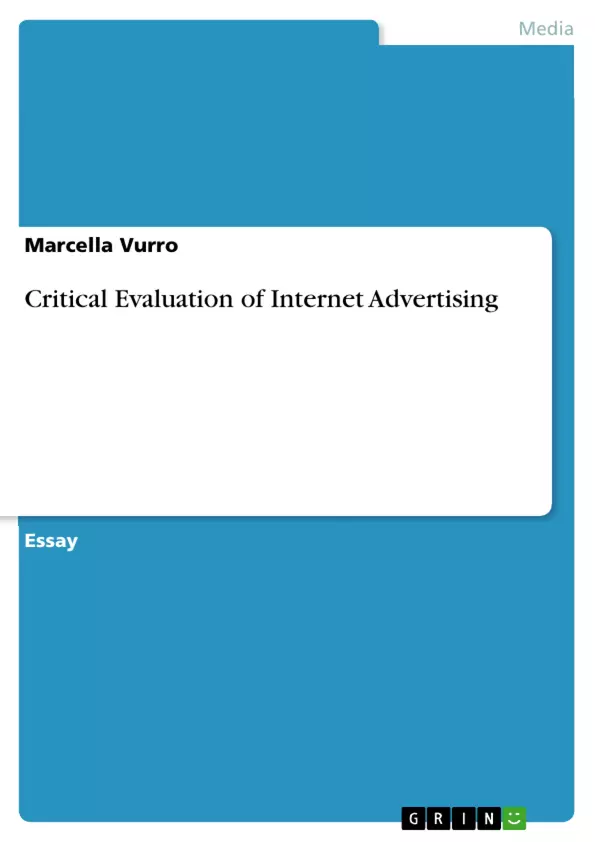The essay is focussing on a critical evaluation of online advertising. It examines different online advertising instruments, such as banner, websites, keyword advertising etc. and identifies the advantages and disadvantages of online advertising.
Inhaltsverzeichnis (Table of Contents)
- Introduction
- Methodology
- Internet Advertising
- Definition of Internet Advertising
- Internet Advertising Prospects
- Online Advertising Effectiveness
- Online Advertising Instruments
- Website/Microsite
- Banner
- E-mail Marketing
- Web 2.0 applications
- Keyword Advertising
- Mobile
- Advantages of Internet Advertising
- Disadvantages of Internet Advertising
- Conclusion
Zielsetzung und Themenschwerpunkte (Objectives and Key Themes)
This essay critically evaluates online advertising, examining various online advertising instruments and identifying their advantages and disadvantages. It focuses on well-established tools and incorporates current online marketing trends, including the growing role of mobile technology. The essay draws upon research studies, primarily focusing on the German market, while also referencing general academic theory and empirical findings.
- Critical evaluation of online advertising instruments
- Advantages and disadvantages of internet advertising
- Influence of current online marketing trends
- Integration of research studies and academic theory
- Focus on the German market
Zusammenfassung der Kapitel (Chapter Summaries)
- Introduction: This chapter introduces the topic of online advertising and highlights the need for businesses to optimize their advertising strategies in a competitive market.
- Methodology: This chapter outlines the research methodology employed, emphasizing the review of existing literature on internet advertising, primarily focusing on well-established tools. It acknowledges current trends in online marketing and considers different perspectives and expert opinions.
- Internet Advertising: This chapter defines internet advertising and explores the concept of the internet as a platform for online advertising. It examines various definitions of internet advertising, emphasizing its interactive and personalized nature.
Schlüsselwörter (Keywords)
This essay focuses on the critical evaluation of online advertising, exploring its definition, instruments, advantages, and disadvantages. Key themes include internet advertising, online advertising instruments, online marketing trends, research studies, and the German market.
- Citar trabajo
- Dipl. Kommunikations- und Marketingwirtin Marcella Vurro (Autor), 2009, Critical Evaluation of Internet Advertising, Múnich, GRIN Verlag, https://www.grin.com/document/142988



